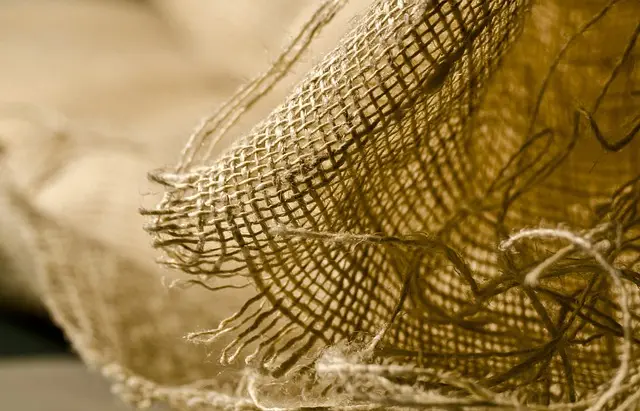Riau Kratom, exclusive to Indonesia's Riau Islands and Riau region, is a unique kratom strain recognized for its balanced alkaloid content of mitragynine and 7-hydroxymitragynine, offering users a distinct blend of energy and calm. Its dark leaves indicate high potency, particularly when processed into 'buds,' which are prized for their effectiveness and often require lower doses to achieve the desired effects. This strain is under scrutiny by researchers and enthusiasts due to its specific characteristics and nuanced influence on users. The cultivation of Riau Kratom in Riau, Sumatra, merges traditional agricultural practices with modern horticulture to yield high-quality kratom, emphasizing the importance of environmental conditions and sustainable farming for optimal alkaloid concentration. The drying process is carefully executed to preserve the integrity of the buds, resulting in a product that reflects the purity and quality inherent in Riau's natural environment. Historically used by local communities for its stimulant properties, Riau Kratom has garnered attention for its potential therapeutic uses, including pain relief, stress management, and as an alternative to opioids in recovery. Its status as a traditional Indonesian remedy combined with contemporary scientific interest positions Riau Kratom as a significant botanical asset worthy of further research into its health benefits.
Explore the rich tapestry of Riau Kratom, a botanical gem from the lush landscapes of Malaysia. This article delves into the unique potency and characteristics of Riau Kratom, shedding light on its cultivation journey and the profound effects it holds within traditional and modern contexts. Join us as we uncover the cultivation practices that transform this Southeast Asian plant from field to sought-after kratom buds, and understand how Riau Kratom stands out in a world of natural wellness options.
- Unveiling the Potency of Riau Kratom: A Guide to Its Distinct Characteristics
- Harvesting and Cultivation Practices: The Journey from Riau's Fields to Kratom Buds
- Understanding the Effects and Uses of Riau Kratom in Traditional and Contemporary Contexts
Unveiling the Potency of Riau Kratom: A Guide to Its Distinct Characteristics

Riau Kratom, indigenous to the Indonesian region of Riau Islands and Riau, is a strain that has garnered attention for its unique potency and distinctive characteristics. Unlike other strains, Riau Kratom is known for its balanced alkaloid profile, which includes mitragynine and 7-hydroxymitragynine, the main active compounds responsible for its effects. This balance contributes to a more refined experience than some of its counterparts, making it a subject of interest among enthusiasts seeking a nuanced interaction with the plant’s properties. The leaves of Riau Kratom are typically darker in color, a visual indicator of their robustness and strength, and when processed, they yield a fine product known as ‘buds.’ These buds are highly prized for their potency, often requiring less dosage to achieve the desired effects. The effects of Riau Kratom are noted to be both stimulating and soothing, providing users with energy and focus while also offering a calming sensation that can help alleviate stress. Its unique properties make it an object of study for those intrigued by the varied aspects of kratom’s impact, highlighting the importance of strain specificity in the kratom experience. Users interested in exploring Riau Kratom should approach it with care, considering its potency and the nuanced effects it imparts, to fully appreciate the distinctiveness of this particular kratom variety.
Harvesting and Cultivation Practices: The Journey from Riau's Fields to Kratom Buds

In the lush and fertile fields of Riau, a province on the island of Sumatra in Indonesia, the cultivation of Kratom, a plant scientifically known as Mitragyna speciosa, is both an art and a science. The journey of Riau Kratom from seed to mature bud is one that is deeply rooted in traditional agricultural practices, yet informed by contemporary horticultural techniques to ensure the highest quality of the product. Harvesting Riau Kratom is a meticulous process, with farmers carefully tending to the plants, ensuring they receive optimal sunlight and water conditions. The trees are typically allowed to mature for around four to five years before their leaves are harvested, as this period allows for the concentration of alkaloids, particularly mitragynine and 7-hydroxymitragynine, which are the primary active compounds in Kratom.
The cultivation practices in Riau involve a harmonious balance between natural and sustainable farming methods. The soil is enriched with organic matter to maintain its fertility, and shade trees are often interspersed among the Kratom plants to mimic their natural habitat. This not only provides the Kratom with the ideal growing conditions but also ensures that the land remains productive for generations to come. Once harvested, the leaves undergo a drying process where they are carefully sun-dried or dried in an oven at low temperatures. This process is crucial to preserving the alkaloid content and maintaining the integrity of the Kratom buds. The end result is a high-quality product that captures the essence of Riau’s pristine environment, reflecting the region’s commitment to producing some of the world’s finest Kratom.
Understanding the Effects and Uses of Riau Kratom in Traditional and Contemporary Contexts

Riau Kratom, native to the Indonesian region of Riau Islands and Riau, has been a subject of interest due to its distinctive effects and historical uses. Traditionally, locals have utilized Riau Kratom for its stimulant properties, often chewing the leaves or brewing them into tea to enhance energy levels and alleviate fatigue during long hours of work in the fields or on fishing boats. The alkaloids mitragynine and 7-hydroxymitragynine, abundant in Riau Kratom, are believed to contribute to its analgesic, sedative, and euphoric effects, which have been used in traditional medicine to manage pain and improve mood.
In contemporary contexts, research into Riau Kratom has led to a broader understanding of its potential applications. Scientific studies have explored the plant’s efficacy in pain management, stress relief, and as an adjunct treatment for opioid addiction due to its opioid-like effects without the same level of risk for dependency. The global interest in natural remedies has shone a spotlight on Riau Kratom, with enthusiasts and researchers alike examining its properties and potential health benefits. As such, Riau Kratom stands as a significant botanical resource, bridging traditional wellness practices with modern scientific inquiry.
In conclusion, the unique potency of Riau Kratom, native to the Malaysian region, sets it apart in the realm of herbal supplements. Its cultivation and harvesting practices reflect a deep-rooted connection with the land, ensuring that each kratom bud is of superior quality. The diverse effects and uses of Riau Kratom, both historically and in modern applications, underscore its significance across various sectors. This article has shed light on the intricacies of this remarkable plant, providing readers with a comprehensive understanding of what makes Riau Kratom a subject of growing interest. As global awareness and research continue to unfold, the potential applications and benefits of this natural resource may further come to light, reinforcing its esteemed position in the world of botanical remedies and wellness practices.






